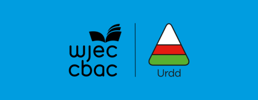
How to get the most from our Knowledge Organisers
Our Knowledge Organisers collect all the key information on a topic of study into an easy-to-digest format. They’re an ideal self-study or revision tool for learners, but they can also be useful for teachers in the classroom. Here’s how you can get the most out of them:
Spacing learning over time
Although the information in Knowledge Organisers is in a digestible format, students will still need time to get to grips with the information. Simply put, spacing means revising material that students have already learned with the aim of consolidating information in their long-term memory.
Spacing is a great way to allow students time to mull over what they’ve learned; this leads to better long-term retention. At the start of a lesson you could stage a low-stakes quiz to bring the facts to the forefront of their minds. You could also set homework assignments which encourage the students to revisit the Knowledge Organiser and use it as a springboard for their own ideas.
Active retrieval
This is essential when working with Knowledge Organisers! Understanding the material is the first step, but also encourage them to retrieve the information from their memory. Quizzes are a versatile option but staging a general discussion around the content is a less stressful way for students to expand their understanding. If the subject is essay based, this method will also encourage them to form their own opinions and forge new links between topics.
During these discussions, encourage students to elaborate on the information in the KO by weaving in their own knowledge. Although this can be done with the KO in front of them, doing so without the material will encourage further consolidation.
Interleaving
Our minds thrive on variety and contrast; learning can stagnate when students are exposed to a sequence of similar topics. Interleaving is a teaching process where multiple topics are mixed within a lesson.
Creating an environment of contrast will boost the students’ attention span and aid learning. Dipping in and out of the KO and avoiding covering too much of the same ground at a time will avoid confusion and boredom. Pick one section of the KO to explore in greater depth as opposed to covering everything at once. This will ensure students aren’t overloaded.
Hopefully these suggestions will let you make the most of your Knowledge Organisers. They can all be accessed on our resources website. You can also follow @WJEC_EdRes on twitter to keep up to date with new resources.

